
Jupiterimages/Comstock/Getty Images
While manicotti is undoubtedly a delicious dish, it is often reserved only for special occasions because it's a time consuming, laborious task to fill cooked, cylindrical pasta tubes with the creamy cheese and egg mixture. The tubes can split apart, stick together or collapse while you're trying to insert the stiff filling. A variety of options can streamline the process so you can even turn manicotti into a weeknight meal.
Pastry Bag
Bags typically used for filling pastries or icing cakes are by far the easiest tools to fill a cooked manicotti pasta tube. You simply fill the bag with the manicotti filling and cut a hole in the tip of the bag. If you don't have these specialized bags on hand, a plastic food storage bag works just as well. Insert the tip in the tube and squeeze the bag to fill up the tubes. To prevent filling from oozing out the other end of the manicotti, insert the tip halfway into the tube and fill it from the center out, then repeat with the opposite end.
Tea Spoon
No, not a teaspoon -- a tea spoon is long and thin and typically used to stir iced tea. Regular spoons are either too wide to fit inside the tube without splitting it or too short to fill the shells completely. Not everyone has special spoons just for stirring tea, so a butter knife also works well. The main difference is that the spoon is able to hold a larger clump of cheese to fill the manicotti faster. You can wipe the butter knife along the inside of the tube to remove the filling from the blade.
Uncooked Noodles
One of the biggest challenges in filling a pasta tube is keeping the tube from collapsing or sticking together until it's filled. Uncooked pasta is rigid so you can focus on filling the tubes, but hold the tube without breaking it. When you start baking without first softening the pasta, you must adjust your cooking times to ensure the pasta cooks tender. Extra water added to the sauce compensates for the water absorbed in the pasta while cooking. If you cover the manicotti with foil while cooking, you can remove the dish from the oven and leave it in place for 10 to 15 minutes to allow the noodles to finish cooking and the extra liquid to absorb. Tear off a corner of a pasta tube to see if it's done.
Rolled
Instead of trying to squeeze a high volume of thick cheese filling into a narrow tube, you can add cheese filling to flat pasta and roll it to form the same cylindrical shape. No-boil lasagna noodles work especially well for this because they don't have wavy edges like other packaged lasagnas; you can also make your own lasagna sheets. Soak the noodles in boiling water for a few minutes to soften them until just pliable, drain, then spoon the mixture in the center of the noodle and roll it up, laying it seam side down in the baking dish. If desired, you can even substitute crepes for traditional pasta noodles.
Related Articles

How to Make Homemade Mac & Cheese

How to Fill Manicotti Shells

Firm Ricotta Cheese Cannoli Filling
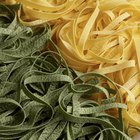
How to Cook Fresh Pasta Dough
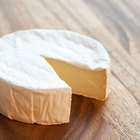
How Can I Get Brie to the Right ...

How to Make Cannolis by Baking

How to Use a Syringe in Cake Decorating
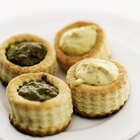
Can Puff Pastry Appetizers Be Made in ...
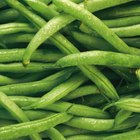
How to Bake Fresh String Beans in the ...

Homemade Mozzarella Sticks with String ...

How to Freeze Mascarpone

How to Make Tuna and Noodle Casserole

How Do I Freeze Stuffed Shells?

How to Fix Grainy Whipped Ganache
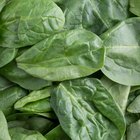
How to Cook Spinach in the Oven

How to Cut Fresh Mozzarella

The Difference Between No-Boil & ...
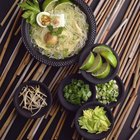
Cooking Dried Banh Pho Noodles
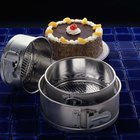
How to Make Lasagna Pie in a Springform ...
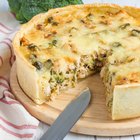
Low-Fat Breakfast Quiche
References
Writer Bio
A former cake decorator and competitive horticulturist, Amelia Allonsy is most at home in the kitchen or with her hands in the dirt. She received her Bachelor's degree from West Virginia University. Her work has been published in the San Francisco Chronicle and on other websites.
Photo Credits
Jupiterimages/Comstock/Getty Images